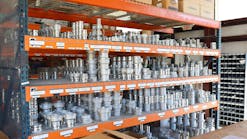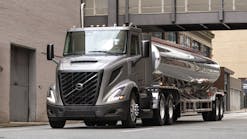Beginning Jan. 1, 2023, companies that move cargoes through European Union ports will be required to report carbon emissions to the European Union authorities. And starting in 2024, failure to pay the carbon tax or calculate it accurately could bring stiff fines or prison time.
Japan will begin charging its own carbon tax on all imported goods based on the CO2 burden of all the vessels and other transport modes used to move the shipment in March 2023. From the time a ship leaves port until it reaches Japan, there must be an accounting of all the carbon that ship produces or its equivalent, and that amount will be divided among all of the cargo. All of the shippers will be billed for their share of the CO2 emissions.
In the United States, The Securities and Exchange Commission (SEC) had planned on announcing rules in October that would require publicly owned companies to disclose their carbon footprint, including greenhouse gas emissions from their supply chains. Companies would have to include that data in quarterly and annual reports.
The SEC proposal currently appears to be on indefinite hold as SEC officials review the U.S. Supreme Court ruling issued in June in West Virginia vs. U.S. Environmental Protection Agency. The Supreme Court determined that federal agencies need clear permission from Congress to create regulations that have major economic or political effects.
SEC officials also must address a technical glitch that may have prevented some feedback regarding SEC’s March 2022 climate proposal and other rulemakings from reaching the agency.
Jonathan Arneault, CEO and co-founder of FuelTrust, discussed the latest developments in Scope 3 carbon emissions management, as well as fee and tax schemes directed at those emissions, during the International Tank Container Association’s Annual Symposium in Kemah, Texas.
“Scope 3 is the measurement of greenhouse gas emissions [carbon dioxide, methane, and several others] that will be tracked for every product you make, sell, transport, and deliver,” he said. “Under Scope 3 carbon accounting, every container you move will have assigned to it a total burden amount. Even emissions for forklifts, gantry cranes, and other equipment will be factored in.
“All of you have just been handed a whole lot of paperwork that your customers will require of you because by law they also have to account for all of the carbon emissions connected to their shipments or supply chains.”
One challenge facing businesses is the way the CO2 tax is calculated. The EU method uses the CO2 measurement times the current market price of the cap-and-trade program (called the European Emissions Trading System). Currently, that price is 74 euros per metric ton of carbon. The rate has fluctuated from 68 euros to 98.
“Because of that, you can’t actually tell what the tax rate will be over time,” he said. “The carbon tax for Japan will be just as challenging. Because the Japanese will send out a tax bill after the cargo has arrived in Japan, shippers and container operators won’t be able to calculate the tax before the ship reaches Japan.”
The biggest challenge right now is that a lot of companies are guessing at their carbon emissions, and a bad guess can be expensive.
“Most of the greenhouse gas accounting used right now relies on estimates,” Arneault said. “During 2020 and 2021, we ran an analysis for all 12,000 ships that were operating in the Baltic Sea at that time. It was impossible for them to have emitted the amount of CO2 that they reported. They all used the same estimation model.
“We put in a fuel analysis model of the transport activity and fuel consumed by each ship. We determined overall that the amount of CO2 not produced was in excess of 6 million metric tons a year at 72 euros per metric ton. With one ship we studied, they were unaware that they were over reporting by 36%.
“A big problem with carbon accounting today is that emissions are double, triple, and quadruple counted today. You’ll pay a lot of unnecessary tax on that if you don’t account accurately.”
Arneault added that accurate carbon accounting will become a critical differentiating factor for shippers and other entities in the supply chain. Customers will choose the provider with the best and most accurate carbon accounting systems.
“You want to be able to reduce your carbon burden wherever possible,” he said. “Don’t let a supplier or transporter burden you with extra CO2. Be careful in charter contracts. If the carbon tax is paid by someone else, you must be able prove that as part of your accounting process.”
Trucking trends
Adam Kroupa, general manager of chemical solutions at CH Robinson, said the outlook for trucking is a bit mixed at this time. Rates are rising even as smaller operators are struggling.
“Small operations [one to five trucks] account for more than 89% of the trucking industry,” he said. “More than 100,000 new carriers were registered last year, most of them owner-operators.”
About 10% of the trucking companies range in size from six to 50 trucks. One percent of the carriers run 51 to 400 trucks. The top 100 carriers with more than 400 trucks are a small fraction of a percent, and just 38 tank truck carriers are part of the top 100.
“So, we believe there are some interesting months ahead for the smaller operations, especially the owner-operators who entered the market after the COVID pandemic,” Kroupa said. “More of the smaller fleets are being bought up. If the economy softens and begins to tighten and they can’t pay their bills, they will have to shut down. However, we don’t believe the drivers will leave the market.”
Moving on to other trends, he said shippers are starting to move back to contracted pricing for truck transport. There also is more of a focus on dedicated service and team drivers.
Kroupa suggested shippers might want to take a fresh look at the spot market. “Contracted pricing is good, but you might be able to benefit from spot pricing,” he said. “It gives you more flexibility. The first and second carriers on your list get most of your business, but if you hit your third carrier in your route guide, it might be better to go to the spot market.”
Rail update
Jonathon Beltran with the Norfolk Southern Railway made his comments before the most recent announcement that railroad workers may go on strike as early as Dec. 5.
While acknowledging that labor is the biggest issue facing the railroad industry, Norfolk Southern has worked hard to add more train crews over the past year.
“The pandemic hit us hard, and we suffered an 18% drop in business during that time,” Beltran said. “We were overwhelmed with volume even as we faced a severe shortage of trucks and container chassis. Fuel prices skyrocketed. We faced a massive labor crisis over the past two years as large numbers of workers left the business.
“We’re starting to see improvement and we should be able to offer more service options in 2023. Intermodal is important to us and Norfolk Southern’s International intermodal volume this year will be 1.2 to 1.3 TEU [twenty-foot equivalent units]. Tank containers account for 1% to 2% of that. In 2023, we expect flat to modest growth in intermodal.”
Tank containers
The tank container population continued to grow over the past year and leasing activity remains strong, according to Ron Beeson, global transportation and logistics manager for The Lubrizol Corporation.
“Currently, 750,000 ISO tank containers are in operation worldwide, and the population is expected to reach 1 million by 2025,” Beeson said. “The global ISO fleet is growing by about 7% to 8% a year. It’s really phenomenal.
“Other than a softer economy in the new year, the biggest challenge we face in with ISO container operations is in port and depot logistics. Both ports and depots are at full capacity. While we might see a little relief in 2023, infrastructure hasn’t kept up with the industry growth rate.”
While international trade is the primary focus for ISO tank container operations, Beeson believes the economics of the ISO tank make it a good fit for other transportation modes in U.S. domestic service. “I believe ISO tank container activity has the potential to grow in the United States,” he said.
Moreover, Beeson and others at the conference suggested that a North American ISO tank container manufacturer would be a welcome addition to the market. It’s an attractive possibility as long as the price is right, they agreed.












